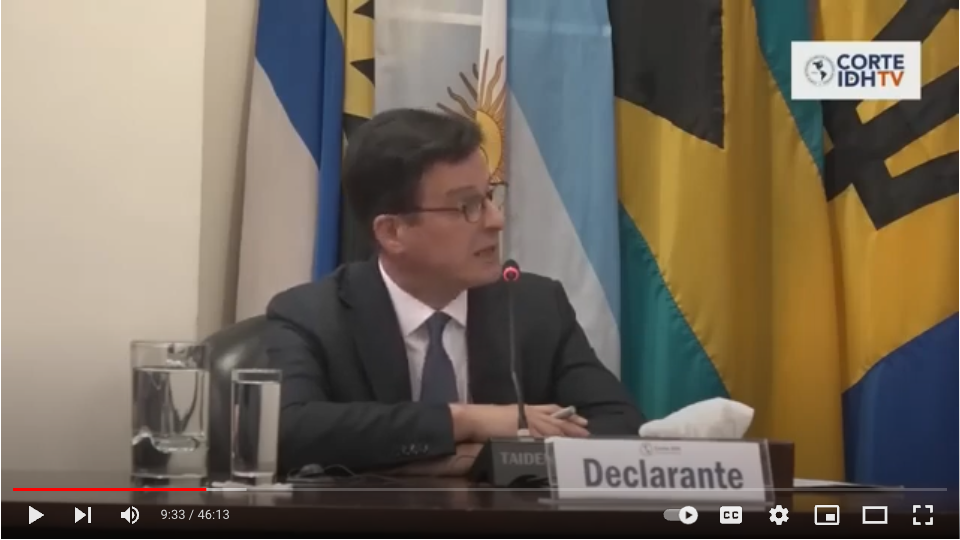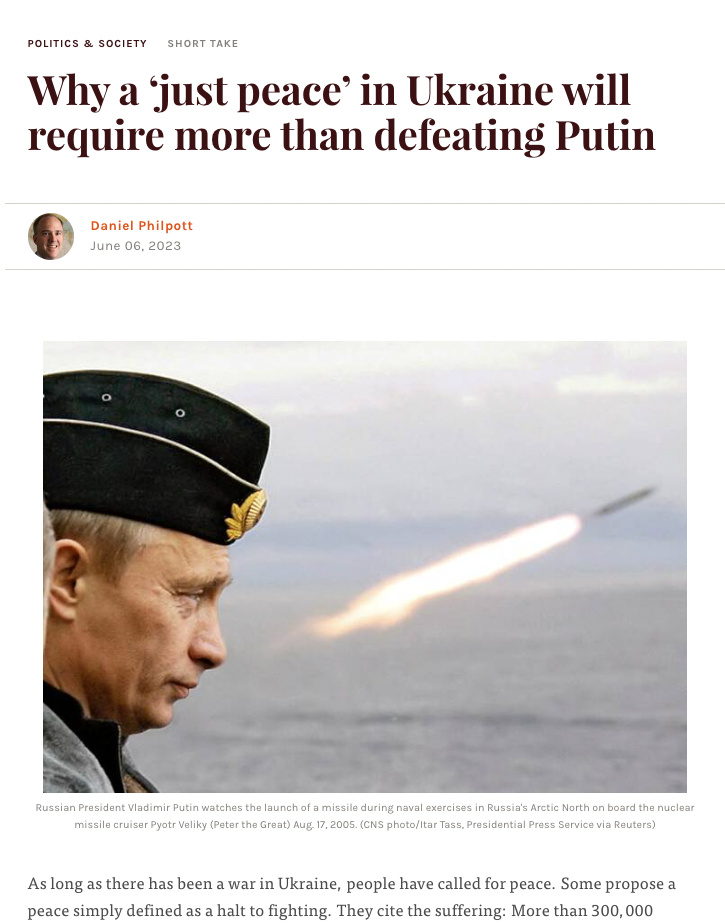Last month, on December 14, 2023, I attended a remarkable meeting of religious leaders from around the world in Princeton University to commemorate the 75th anniversary of the Universal Declaration of Human Rights. Common today is the view that religion is an enemy of human rights. The conference, though, recalled the remarkable consensus of world religious leaders that made the adoption of the UDHR possible in 1948, a story that Harvard Emeritus Professor Mary Ann Glendon has told in her book of 2002, A World Made New. Glendon was a starring speaker at the conference, along with Mr. Yahya Cholil Staquf, the General Secretary of Indonesia’s Nahdlatul Ulama, the world’s largest Muslim organization and a strong proponent of religious freedom. Muslim, Jewish, Catholic, evangelical Protestant, Mormon, and Buddhist thought leaders were all in attendance. Behind the conference was the Center for Shared Civilizational Values, whose efforts are detailed here. The members agreed upon a “R20 Princeton Declaration” of support for human rights from the world’s religions. If the logic behind the declaration is correct, human rights will depend on religion if they to remain globally prominent in the next 75 years just as they depended on religion for being adopted in the UDHR.
I was asked to speak about the possibility of religions changing so as to support human rights. I answered by drawing upon my own religion, Catholicism, in a seven minute set of remarks:
One of the themes of Mary Ann Glendon’s masterful narration of the crafting of the Universal Declaration of Human Rights, A World Made New, is supremely relevant for our consultation: her story of how the Universal Declaration of Human Rights came to be supported by major world religious and philosophical traditions – Catholicism, Protestantism, Islam, Judaism, Hinduism, and Confucianism. Religions? Human rights? Have not religions long relegated their heretics and other religions’ minorities to ghettos, dhimmi status, inquisitions, crusades, and second class citizenship? Such skepticism is not altogether misplaced. Prior to and even during modern centuries, it has been rare for any religious tradition to uphold religious freedom, one of the UDHR’s most important human rights. Religious traditions, it seems, must be capable of change if they are to become part of a global consensus on human rights.
Members of religious traditions, though, might find this backwards. If they hold their religion to be encompassingly true, they might well ask that human rights be made compatible with their religion rather than that their religion change to fit human rights.
If a religion is not compatible with certain human rights, then, it seems that we are stuck: Proponents of human rights demand that a religion change, while proponents of the religion resist this very change. A third way exists, though, that this binary choice elides. That is, a religion could change its position on human rights without compromising, and even through drawing on, its enduring claims to truth. I will argue that the Catholic Church did exactly this in its teachings on religious freedom and so became the world’s largest proponent of the global human rights cause.
The Christian Church was at first the recipient of religious repression. A Roman governor executed the Church’s founder at the behest of leaders of his own religion on account of his religious claims. All of Jesus’s apostles except for one were martyred. But then, just following the Roman Empire’s largest persecution came one of history’s greatest game-changers, the conversion of the Emperor Constantine to Christianity in 312. Constantine tolerated other religions at first, but by the end of the fourth century, the Roman Empire sharply restricted other religions. An intellectual underpinning for this restriction came in St. Augustine’s decision to support the suppression of the heretical Donatist sect in the early fifth century.
Over the following sixteen centuries, the Church sanctioned the coercion and subordination of heretics and religious minorities. The Inquisition, a Church court whose persecution Black Legends have wildly exaggerated, nevertheless mandated the execution of some 6000 heretics between the 12th and the 19th centuries. Catholic princes, sometimes with the support of bishops, forced the conversion and exile of Jews and Muslims and treated them as second class citizens in countries across medieval Europe, especially Spain. In early modern Europe Catholics and Protestants killed one another in vying to establish and rule each of their churches in their territory. Even after the Catholic Church had its last heretic hanged in 1826, popes in the 19th century continued to reject religious freedom as an “absurd and erroneous opinion” and “a putrid font of indifferentism” that they thought was rooted in the relativism of the French Revolution. As late as the 1950s, the Church in Rome taught that the state could restrict other faiths and silenced the writings of the American Jesuit, John Courtney Murray, a pioneer of Catholic arguments for religious freedom.
The Church proclaimed religious freedom as a natural human right in its declaration, Dignitatis Humanae, of December 7, 1965, at the close of the Second Vatican Council. How did it come to its new position?
Certain seeds of freedom had been present since the earliest centuries. As Timothy Samuel Shah has shown, early Christian theologians such as Tertullian and Lactantius, a court adviser to Constantine, had taught religious freedom. Even during long centuries of sanctioned coercion, philosophers such as Augustine and Aquinas as well as certain bishops held that faith must be a free act and could not be coerced. They justified burning heretics on the argument that heresy, like sedition, was a threat to social cohesion and the souls of others. Thomas Aquinas compared religious heresy to counterfeit money, a threat to the entire society.
At the Council, skeptics such as Cardinal Alfredo Ottaviani argued that error has no rights, but proponents replied that persons have rights, namely to search for religious truth. The doctrine that heretics could be legally punished for their social damage had been a political, not a dogmatic, one, and could be left behind without detracting from eternal truth. The council offered a basis for religious freedom, dignity, that differed from the basis on which 19th century popes rejected religious freedom, relativism. The Church’s doctrine had developed.
The Church’s pathway to religious freedom may hold lessons for other religions. Islam, like Catholicism, has a long history of denying full religious freedom. Like Catholicism, it faced secular enlightenment claims of religious tolerance that did not tolerate Islam and were unsound in their own right. Like Catholicism, Islam also contains seed of religious freedom such as the Quran’s teaching (2:256), “there is no compulsion in religion.” Muslim thought leaders such as Yahya Cholil Staquf and Mustafa Akyol have pioneered arguments for religious freedom on traditional Islamic grounds, much as Fr. Murray did for Catholicism.
Yet we should be careful not to conclude from all of this that religious traditions are stragglers, forever catching up to what secular modernity has pioneered. Living in the Roman Empire, Christians not only advocated religious freedom but also laid the foundations for human rights in their notions of the dignity of every person, equality, and universalism. Natural rights appear in the writings of Thomas Aquinas, medieval canon law, the Spanish scholastics of the fifteenth century, and modern papal encyclicals. Meanwhile, leading secular theorists of human rights such as Yale’s Samuel Moyn, argue that human rights are expressions of partisan positions, an unpromising recipe for a global consensus that rights are universally valid. Perhaps the real question is not whether religions can come to support human rights but whether human rights can be sustained without religion.



